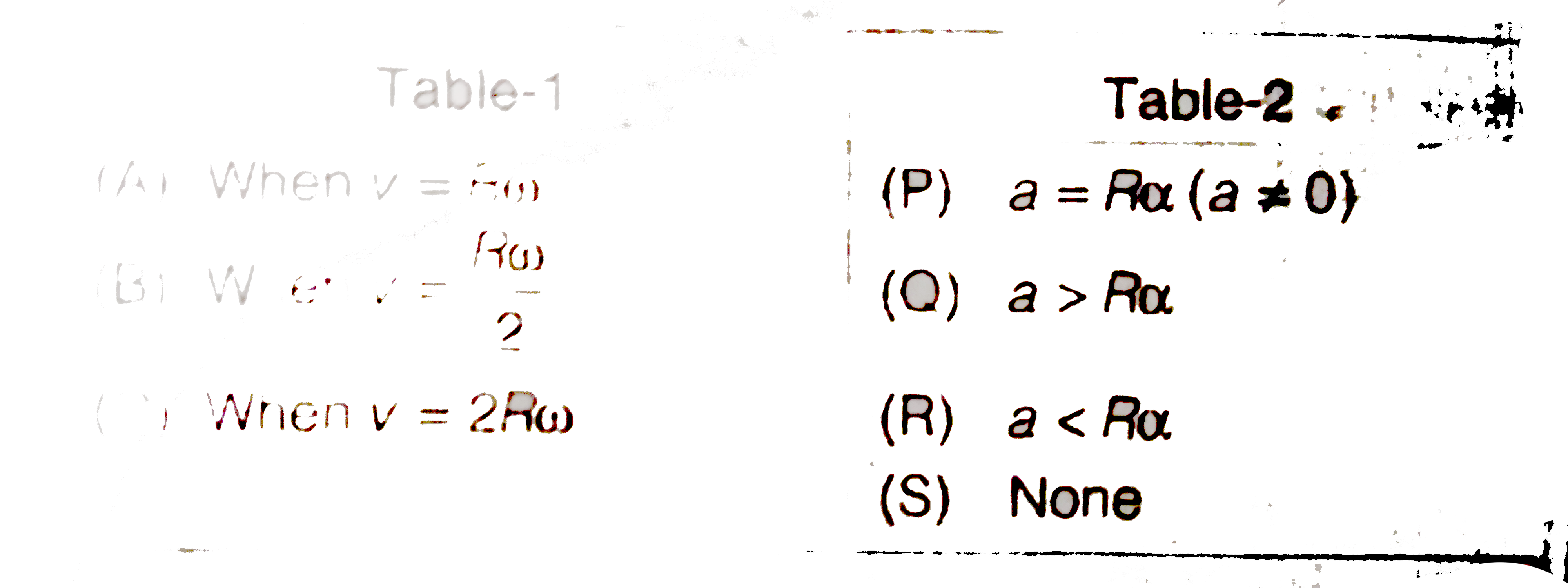A sphere is rolled on a rough horizontal surface. It gradually slows down and stops. The force of friction tries to a decrease the linear velocity b increase the angular velocity c increase the linear momentum d decrease the angular velocity.
a decrease the linear velocityb increase the angular velocityExplanation: When a sphere is pushed on a rough horizontal surface to roll it is given some linear speed and it ties to slip on the surface which is opposed by the force of friction so it tries to decrease the linear velocity and due to its direction it tries to increase the angular velocity. Hence option a and b and not the options c and d.
Related Solutions
A sphere is rolled on a rough horizontal surface. It gradually slows down and finally stops. The force of friction tries to
View SolutionA sphere is rolled on a rough horizontal surface. It gradually slows down and stops. The force of friction tries to
View SolutionA sphere is rolled on a rough horizontal surface. It gradually slows down and stops.The force of friction tries to
View SolutionA sphere is rolled on a rough horizontal surface. It gradually slows down and stops. The force of friction tries to
View SolutionA sphere is rolled on a rough horizontal surface. It gradually slows down and stops. The force of friction tries to
View SolutionA sphere is rolled on a rough horizontal surface. It gradually slows down and stops. The force of friction tries to
View SolutionIf a disc is given a linear velocity on a rough horizontal surface, then its angular momentum is
View SolutionA sphere is rolled on a rough horizontal surface. It gradually slows down and stops.The force of friction tries to
View SolutionA sphere is performing pure rolling on a rough horizontal surface with constant angular velocity. Frictional force acting on the sphere is zero. Velocity of contact point is zero.
View SolutionA uniform sphere of radius R is palced on a rough horizontal surface and given a linear velocity and an angular velocity as shown . If the angular velocity and the linear velocity both become zero simultaneously, then
View SolutionA solid sphere is set into motion on a rough horizontal surface with a linear velocity v in the forward direction and an angular velocity v/R in the anticlockwise direction as shown in the figure. Find the linear speed of the sphere, when it stops rotating.
View SolutionA sphere is rolled on a rough horizontal surface It graduatly shown down and stops. The force of friction tries to
View SolutionA solid sphere with a velocity (of centre of mass) v and angular velocity omega is gently placed on a rough horizontal surface. The frictional force on the sphere :
View SolutionA sphere rolling on a rough horizontal surface with constant velocity then it start going up on a smooth inclined plane. Rotational of sphere decreases continuosly on horizontal and inclined surface.
Rotational decreases if torque due to friction opposes angular velocity of sphere.
View SolutionA sphere rolling on a horizontal rough surface Collides elastically with a smooth vertical wall, as shown in Fig. State which of the following statements is true or false. a. After collision, the velocity of the centre of mass gets reversed. b. Angular momentum of the sphere about the point of contact with the wall is conserved. c. Angular momentum of the sphere about a stationary point on the horizontal surface is conserved. d. Just after collision the point of contact with the horizontal surface is moving towards the wall. e. After collision the friction force acts on the sphere such that it decreases the linear speed and increases the angular speed. f. Finally, when the sphere starts rolling, it is moving away from the wall.
View SolutionA sphere rolling on a horizontal rough surface Collides elastically with a smooth vertical wall, as shown in Fig. State which of the following statements is true or false.
 a. After collision, the velocity of the centre of mass gets reversed.
a. After collision, the velocity of the centre of mass gets reversed.
b. Angular momentum of the sphere about the point of contact with the wall is conserved.
c. Angular momentum of the sphere about a stationary point on the horizontal surface is conserved.
d. Just after collision the point of contact with the horizontal surface is moving towards the wall.
e. After collision the friction force acts on the sphere such that it decreases the linear speed and increases the angular speed.
f. Finally, when the sphere starts rolling, it is moving away from the wall.
View SolutionA disc with linear velocity v and angular velocity is placed on rough ground. Suppose be the magnitudes of linear and angular acceleration due to friction.


View SolutionA disc with linear velocity v and angular velocity is placed on rough ground. Suppose be the magnitudes of linear and angular acceleration due to friction.


View Solution
solid sphere of radius is gently placed on a rough horizontal ground with an initial angular speed and no linear velocity. If the coefficient of friction is , find the time when the slipping stops. in addition state the linear velocity and angular velocity at the end of slipping
View Solution
solid sphere of radius is gently placed on a rough horizontal ground with an initial angular speed and no linear velocity. If the coefficient of friction is , find the time when the slipping stops. in addition state the linear velocity and angular velocity at the end of slipping
View Solution